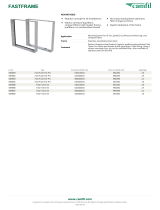
1.7. Warranty Conditions
A. RADWAG feels obliged to repair or exchange all elements that
appear to be faulty by production or by construction.
B. Defining defects of unclear origin and means of their
elimination can only be realized with assistance of
manufacturer and user representatives.
C. RADWAG does not bear any responsibility for damage or
losses resulting from unauthorized or inadequate performing of
production or service processes.
D. The warranty does not cover:
• mechanical damage caused by product exploitation other
than intended, damage of thermal and chemical origin,
damage caused by lightning, overvoltage in the power
network or other random event,
• damage caused by product exploitation other than
intended,
• mechanical damage, if service claims removing or
destroying protective stickers which secure the platform’s
housing against unauthorized access,
• damage caused by liquids, water and natural wear,
• damage caused by inappropriate setting or by electrical
wiring failures,
• damage caused by overloading of the mechanical
measuring system,
• inappropriate cleaning habits.
E. Loss of warranty takes place if:
• a repair is carried out outside RADWAG authorized service
point,
• service claims intrusion into mechanical or electronic
construction by unauthorized people,
• the platform does not bear company security stickers.
F. For detailed warranty conditions read the warranty certificate.






















